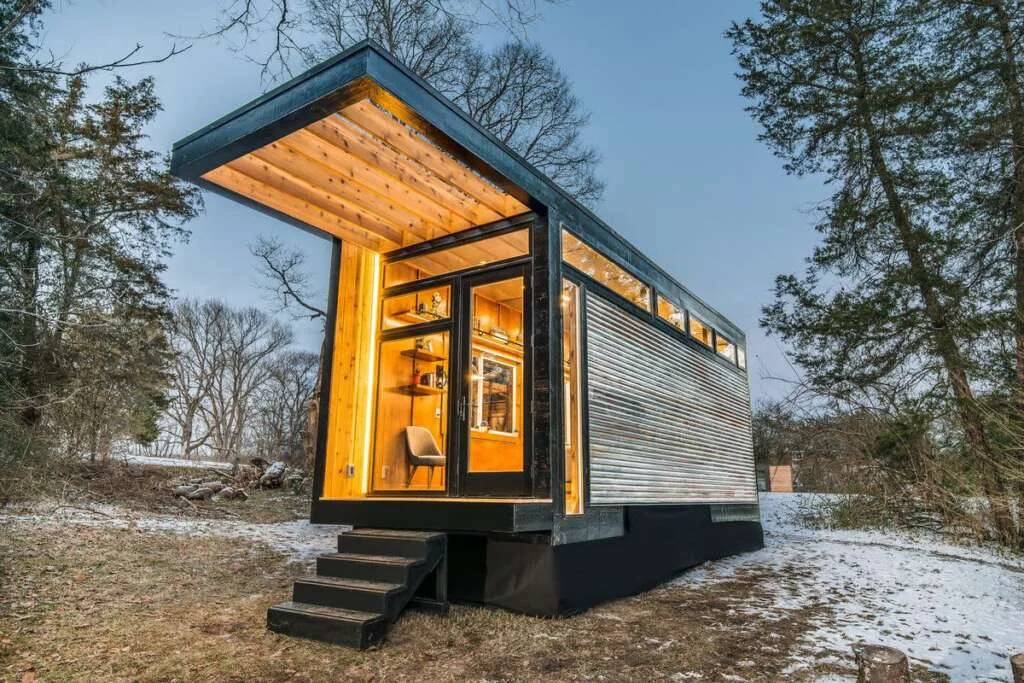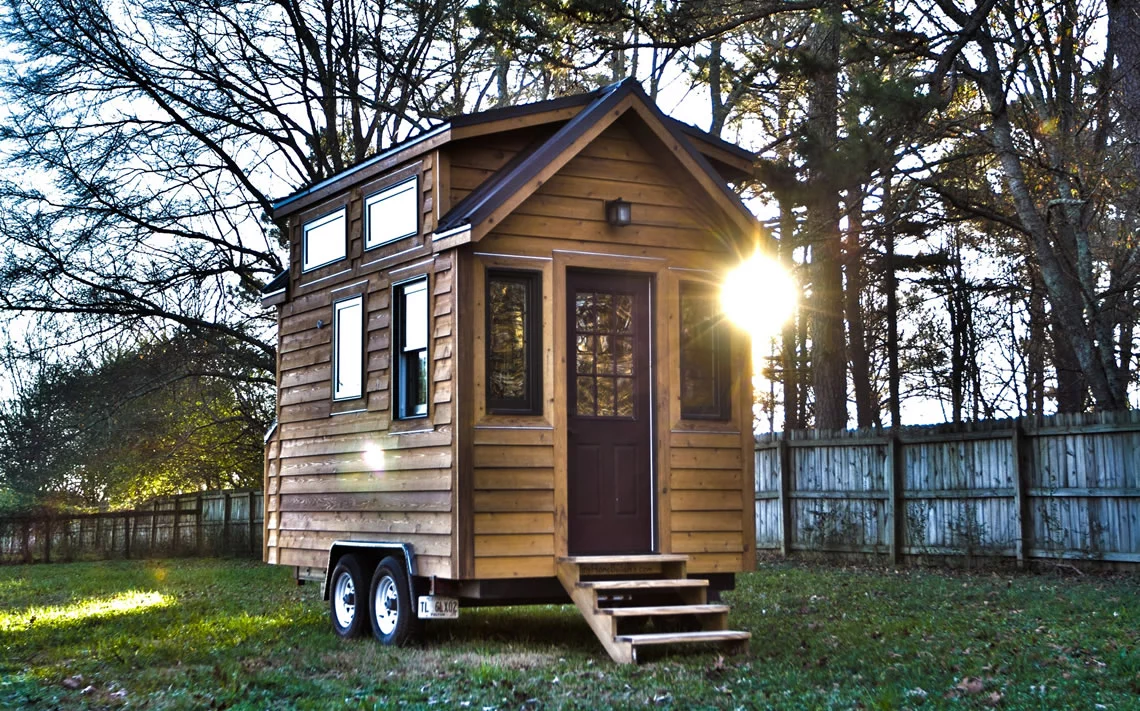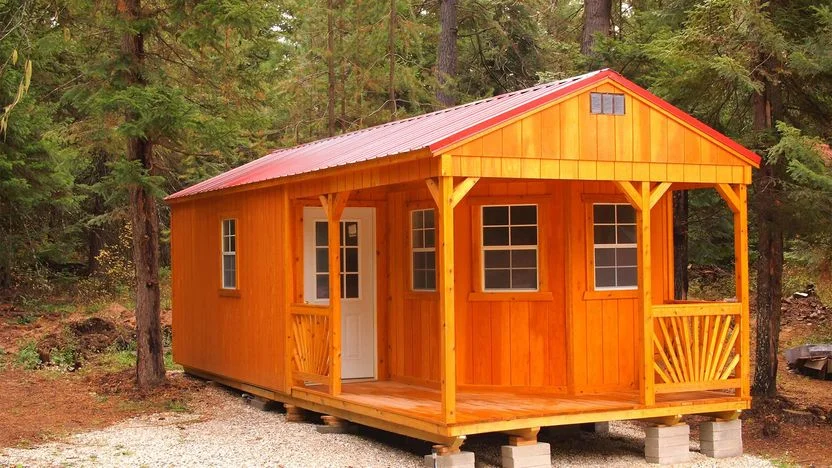Imagine a cozy little space that is all yours, a place where you can simplify your life and focus on what truly matters. That, my friend, is the essence of a tiny home. These pint-sized dwellings have been captivating the imagination of homeowners and adventurers alike, offering a minimalist lifestyle that embraces freedom and sustainability. In this article, we will explore the concept of a tiny home, examining its unique features and the reasons why people are falling head over heels for this small yet mighty living trend. So, buckle up and get ready to embark on a delightful journey into the world of tiny homes!
What is a Tiny Home?
A tiny home is a compact and efficient living space that is designed to maximize functionality in a small footprint. These homes, also known as micro homes or mini houses, have gained popularity in recent years as an alternative to traditional larger dwellings. They provide a unique and minimalist approach to living, offering a simpler, more affordable, and environmentally-friendly lifestyle.

1. Definition and Concept of Tiny Homes
Tiny homes are typically defined as residential structures that are no larger than 400 square feet. They are designed to have all the necessary amenities of a traditional home, including a kitchen, bathroom, and sleeping area, but in a much smaller scale. The concept of tiny homes is based on the idea of living with less, focusing on quality over quantity, and reducing one’s environmental impact.
1.1 Characteristics of Tiny Homes
There are several key characteristics that define tiny homes. First and foremost, they are small in size, often ranging from around 100 to 400 square feet. Despite their size, tiny homes are designed to be fully functional and efficient, utilizing every inch of available space. They also prioritize sustainability and minimize environmental impact through the use of eco-friendly materials and energy-efficient systems. Additionally, tiny homes often have a simple and minimalist aesthetic, with clean lines and a clutter-free living environment.
2. Advantages of Tiny Homes
Tiny homes offer a range of advantages that make them an attractive housing option for many people. From affordability to simplified living and environmental benefits, here are some of the key advantages of tiny homes:
2.1 Affordability
One of the main advantages of tiny homes is their affordability. The cost of building or purchasing a tiny home is significantly lower compared to a conventional house. With a smaller footprint, less building materials are required, resulting in lower construction costs. Additionally, tiny homes require less energy for heating, cooling, and maintenance, thus reducing ongoing expenses. For those looking to own a home on a limited budget, tiny homes provide an affordable alternative.
2.2 Simplified Living
Tiny homes promote a simplified lifestyle, focusing on what truly matters. With limited space, there is less room for unnecessary possessions, encouraging individuals to downsize and prioritize their belongings. This minimalistic approach forces residents to declutter their lives, leading to a sense of freedom and mental clarity. The reduced maintenance and cleaning requirements of tiny homes also contribute to a more simplified and stress-free living experience.
2.3 Environmental Benefits
Living in a tiny home has many environmental benefits. Firstly, the smaller size means reduced energy consumption, resulting in lower carbon emissions and a smaller ecological footprint. Additionally, many tiny homes incorporate sustainable design elements such as solar panels, rainwater collection systems, and energy-efficient appliances, further minimizing their environmental impact. By living in a tiny home, individuals can contribute to a greener and more sustainable future.
3. Types of Tiny Homes
Tiny homes come in various forms and designs to suit different preferences and lifestyles. Here are two common types of tiny homes:
3.1 Tiny Houses on Wheels
Tiny houses on wheels, also known as THOWs, are mobile and provide the flexibility to easily move and relocate. These homes are built on trailers or skids, allowing homeowners to travel with their homes or park them in different locations. Tiny houses on wheels offer the freedom to live in different areas or even go on road trips while still enjoying the benefits of owning a home.
3.2 Small Prefabricated Homes
Small prefabricated homes are another type of tiny home that offers convenience and efficiency. These homes are preassembled in a factory and delivered to the designated location, allowing for a quicker and more streamlined construction process. Prefabricated tiny homes come in various styles and designs, offering homeowners the opportunity to customize their living space to suit their needs and preferences.
4. Design and Layout Considerations for Tiny Homes
When designing a tiny home, careful consideration must be given to optimize space efficiency and functionality. Here are some important design and layout considerations for tiny homes:
4.1 Maximizing Space Efficiency
In a tiny home, every inch of space counts. Therefore, it is crucial to maximize space efficiency through thoughtful design and layout. This can be achieved by utilizing multifunctional furniture, incorporating built-in storage solutions, and employing creative space-saving techniques such as loft beds and foldable furniture. Effective space planning and organization are key to making the most out of limited square footage.
4.2 Multifunctional Furniture
Multifunctional furniture plays a vital role in tiny homes, as it allows for multiple uses of the same piece of furniture. For example, a sofa can also serve as a guest bed, or a dining table can be transformed into a workspace. By incorporating furniture that serves multiple purposes, homeowners can make better use of their limited space without sacrificing functionality or comfort.
4.3 Storage Solutions
Storage is often a significant concern in tiny homes, as there is limited space for belongings. Utilizing clever storage solutions is essential to keep a tiny home organized and clutter-free. This can be achieved through the use of built-in cabinets, hidden storage compartments, and vertical storage systems. Maximizing storage options and utilizing every nook and cranny helps create a sense of order and eliminates the feeling of a cramped living space.

5. Challenges and Drawbacks of Tiny Homes
While tiny homes offer many benefits, they also come with certain challenges and drawbacks. It is important to be aware of these factors when considering a tiny home lifestyle:
5.1 Limited Space
The most obvious challenge of living in a tiny home is the limited space. For individuals accustomed to a larger living area, adjusting to the compactness of a tiny home can be a significant change. It requires careful organization and a minimalist mindset to live comfortably within the confines of a small space. Additionally, accommodating guests or hosting social gatherings may be more challenging in a tiny home due to the lack of space.
5.2 Zoning and Legal Restrictions
Another challenge that tiny homeowners may face is zoning and legal restrictions. In some areas, there are regulations and restrictions that dictate where and how tiny homes can be placed or lived in. Zoning laws may not allow for permanent residences in certain areas, or there may be strict regulations on the size and features of tiny homes. It is important to research and understand the local regulations before embarking on a tiny home journey.
5.3 Difficulty Reselling
Reselling a tiny home can be more challenging compared to a traditional house. The niche market for tiny homes and the unique nature of these properties can make finding a buyer more difficult. Additionally, the value of a tiny home may not appreciate at the same rate as conventional homes, making it a less attractive investment option for some individuals. It is important to consider the potential challenges of reselling a tiny home and weigh them against the benefits of living in one.
6. Tiny Home Living: Is It Right for You?
Deciding whether tiny home living is right for you requires careful consideration of various factors. Here are some important factors to consider when contemplating the tiny home lifestyle:
6.1 Factors to Consider
Before embracing tiny home living, it is essential to evaluate factors such as personal space requirements, lifestyle preferences, and long-term goals. Consider whether you can comfortably adapt to a smaller living environment and if you are willing to let go of unnecessary possessions. Additionally, assess the financial implications, including the cost of building or purchasing a tiny home and ongoing maintenance expenses.
6.2 Psychological Impact
Living in a tiny home can have a significant psychological impact. While some individuals thrive in a cozy and minimalistic environment, others may find it claustrophobic or restrictive. It is important to reflect on how you may personally respond to limited space and whether it aligns with your emotional well-being and mental health. Consultation with a mental health professional may be beneficial in understanding the potential psychological impact of tiny home living.
6.3 Lifestyle Adaptations
Embarking on a tiny home lifestyle often requires adaptations to everyday routines and habits. Cooking, cleaning, and storage methods may need to be adjusted to suit the smaller space. Additionally, the lack of space for large social gatherings may necessitate alternative ways to entertain or spend time with friends and family. Consider whether you are open to making these lifestyle adaptations and if it aligns with your social and personal needs.
7. Tiny Home Communities and Experiences
For those who choose to embrace tiny home living, joining a tiny home community can enhance the overall experience. Here are some benefits, challenges, and personal stories related to living in tiny home communities:
7.1 Benefits of Living in Tiny Home Communities
Tiny home communities offer a sense of camaraderie and support among like-minded individuals who appreciate the lifestyle. Living in close proximity to others who share similar values and challenges can create a strong sense of community. Tiny home communities often promote shared resources and amenities, such as communal gardens, laundromats, and gathering spaces, fostering a spirit of cooperation and connection.
7.2 Challenges and Considerations
While tiny home communities offer many benefits, there are also challenges to consider. Living in close quarters with neighbors can present privacy concerns, and conflicts may arise due to differences in lifestyle preferences. Additionally, some tiny home communities may have specific rules and regulations that residents must adhere to, which may restrict personal freedoms or preferences. It is important to carefully research and visit potential communities to ensure they align with your values and expectations.
7.3 Personal Stories and Testimonials
Numerous individuals have shared their personal stories and testimonials about their experiences with tiny home living. These stories provide valuable insight into the joys, challenges, and lessons learned from embracing the tiny home lifestyle. Reading about others’ experiences can help prospective tiny homeowners gain a better understanding of what to expect and how to navigate the unique aspects of tiny home living.
8. Building and Buying Tiny Homes
When it comes to acquiring a tiny home, there are various options available. Here are three common approaches to building and buying tiny homes:
8.1 DIY Construction
Building a tiny home from scratch can be a rewarding experience for those who are handy and enjoy a hands-on approach. DIY construction allows for complete customization and control over the design and layout of the home. It also offers the opportunity to learn new skills and save on labor costs. However, DIY construction requires significant time, effort, and expertise, making it a more suitable option for individuals with construction experience or a strong desire to learn.
8.2 Hiring Professional Builders
For those who prefer a more turnkey approach, hiring professional builders to construct a custom-designed tiny home is a viable option. Working with experienced builders ensures high-quality craftsmanship and adherence to building codes and regulations. While this option may come with a higher price tag, it offers the convenience of having professionals handle the construction process, allowing homeowners to focus on other aspects of their tiny home journey.
8.3 Purchasing Pre-built Tiny Homes
Another option is to purchase pre-built tiny homes from established manufacturers or companies specializing in tiny home construction. Pre-built tiny homes are ready to be delivered and installed on-site, offering a quick and hassle-free solution. There is a wide range of pre-built models available, providing options to suit different tastes and budgets. However, customization options may be limited, and buyers need to ensure they are purchasing from a reputable and trustworthy company.

10. Future of Tiny Homes
Tiny homes have gained significant attention and popularity in recent years, and their future appears bright. Here are some of the reasons why tiny homes are likely to continue growing in popularity:
10.1 Increasing Popularity and Mainstream Attention
Tiny homes have garnered increasing attention from the media, sustainable living advocates, and individuals seeking alternative housing options. The affordability, sustainability, and minimalist lifestyle promoted by tiny homes resonate with many people, particularly those looking to simplify their lives and reduce their carbon footprint. As the tiny home movement gains more mainstream attention, it is likely that more individuals will embrace this unconventional yet appealing housing option.
10.2 Potential Innovations and Trends
As the demand for tiny homes continues to grow, so does the potential for innovations and trends within the industry. Manufacturers, designers, and builders are constantly pushing the boundaries of tiny home design, seeking to maximize space efficiency and incorporate new technologies. There is potential for advancements in off-grid capabilities, smart home integration, and eco-friendly building materials, further enhancing the appeal and functionality of tiny homes.
In conclusion, a tiny home is a compact and efficient living space that offers a range of advantages, including affordability, simplified living, and environmental benefits. There are various types of tiny homes, each with its own unique features and design considerations. While there are challenges and drawbacks associated with tiny homes, careful consideration of personal factors and preferences can help determine if this lifestyle is right for you. Joining a tiny home community can enhance the experience and provide a sense of connection and support. When acquiring a tiny home, individuals have options such as DIY construction, hiring professional builders, or purchasing pre-built homes. The future of tiny homes looks promising, with increasing popularity and potential innovations on the horizon. Whether you choose to embrace the tiny home lifestyle or not, understanding the concept and possibilities of tiny homes can broaden your perspective on alternative housing options.

